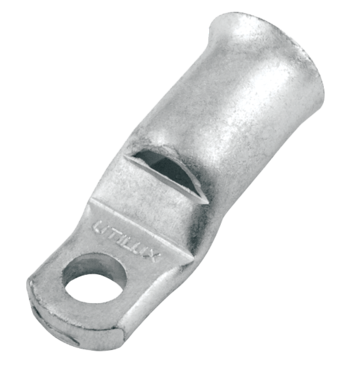A Possible Solution to Physical Connection Constraints.
In the world of electrical installations, every detail matters. From cable sizing to terminal connections, ensuring a safe and compliant system often involves balancing technical requirements with practical constraints. One such component that often flies under the radar is the reduced palm lug—a critical tool for managing oversized cables in tight or restricted spaces.
What Are Reduced Palm Lugs?
Reduced palm lugs are electrical connectors designed with a smaller palm (the flat, bolted section of the lug) to enable the termination of oversized cables on devices with limited terminal space. They offer a practical solution for situations where standard lugs would be too large for the available connection points.

Why Reduced Palm Lugs Are Necessary
In the real world, certain constraints force contractors to look for alternative solutions. Here’s why reduced palm lugs often become indispensable:
1. Addressing Voltage Drop with Oversized Cables
Voltage drop is a common issue in long cable runs, especially in high-demand circuits. To mitigate this, oversized cables are often used to reduce resistance. However, the physical terminal sizes on devices—such as ACBs (Air Circuit Breakers), MCCBs (Moulded Case Circuit Breakers), or switch fuses—may not accommodate these larger cables. This is where reduced palm lugs come in, allowing for a safe and secure connection without modifying the device.
2. The Realities of Electrical Design
In many cases, electrical designers may overlook the physical size of the device when specifying oversized conductors. This can lead to significant challenges during installation when the terminal points are too small for the cables.
A potential solution in such cases is to increase the current rating of the device and fuse down to allow for larger terminals. This approach provides a larger landing area for the cables, eliminating the need for reduced palm lugs. However, this is not always practical due to budget constraints or the unavailability of larger devices.
3. Retrofitting Existing Systems
Reduced palm lugs are especially valuable in retrospective installations, where you’re working with pre-existing devices such as switch fuses, MCCBs, or ACBs that cannot be easily replaced. Upgrading the device to accommodate larger cables may not be an option, either due to cost or logistical limitations. In these cases, reduced palm lugs provide a compliant and cost-effective way to connect oversized cables to smaller terminals.
Key Benefits of Reduced Palm Lugs
- Space Optimisation: Fits larger cables into devices with limited terminal space.
- Cost-Effective: Avoids the expense of upgrading devices or redesigning systems.
- Improved Safety: Maintains secure connections while adhering to clearance and creepage distance standards, especially when paired with phase partitions.
- Retrofitting Flexibility: Ideal for connecting to existing devices without significant modifications.
Common Misconceptions and Best Practices
Design Oversights: Electrical designers often focus on the electrical characteristics of the system without fully considering the physical limitations of devices like ACBs, MCCBs, and switch fuses. This can lead to challenges during installation when oversized cables need to be connected to terminals designed for smaller conductors.
Practical Solutions: Increasing the device’s current rating and fusing down can provide a larger terminal size, making reduced palm lugs unnecessary. However, when this solution isn’t feasible, reduced palm lugs offer a reliable alternative.
Planning for Retrofitting: When working on existing installations, reduced palm lugs offer a straightforward way to connect modern oversized cables to older devices without compromising safety or compliance.
You have options
Reduced palm lugs are an essential solution for contractors facing the dual challenges of oversized cables and limited terminal space. However, in new designs, electrical designers should consider increasing the device size and fusing down where possible to avoid the need for reduced palm lugs. When this isn’t feasible, these specialised lugs ensure a safe, compliant, and efficient connection.
For contractors and electrical designers, understanding the role of reduced palm lugs is key to navigating real-world challenges. If you’re facing these issues on-site, consider reduced palm lugs as a practical and cost-effective solution.
Possible intersting reading
Disclaimer:
The information provided on this site is for general informational purposes only and may not reflect the most current regulations or standards. Legislation, industry guidelines, and best practices can change over time, and it is the user’s responsibility to research and ensure compliance with the latest requirements for their specific situation. Always consult a qualified professional for advice tailored to your project or application.
